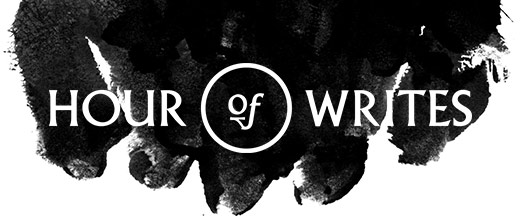Winner of Learning To Read announced! Literacy teacher Zoe Parsons reads between the lines...
9th July 2016
Particularly notable was the physicality of many interpretations to the prompt ‘Learning to Read’. Blindness, communicating by touch, learning to experience the world through new senses, were handled with delicacy and compassion by several writers. The frustration of being unable to read was another popular theme. Emotional connection – ‘reading’ other people – was the central metaphor of several pieces.
My first clear selection – 1924 – hinged on this interpretation. The cold tension of the broken rhythm made me immediately nervous. The questions unfolded into contorted expressions of guilt and anxiety, perfectly reflecting the desperate second-guessing of the narrator. By the time I reached the end of the poem I felt like I was right there in the room, holding my breath, braced for the inevitable ending; a powerful, upsetting and highly effective piece of writing.
My second featured entry was harder to choose. There was a small group of poems that combined beauty with emotional integrity and were highly appealing. I decided to go with whichever one stayed in my mind most clearly through the day, and found it was 1923. I was moved by its intense, innocent expression of the pangs of first-love heartbreak. I particularly enjoyed the way it shifted between vivid sensuality, and the abstract colours and textures of the decaying love.
The winner, though, had to be 1930 – LOOK. SEE. READ.
Firstly, it was just fun to read – energetic, believable, thought-provoking and very well written. What wasn’t to like? Then, as I thought more about it, I realised the writer was doing something quite extraordinary.
First, a digression:
When we start to read, we’re flooded with new information; new voices, stories, and ideas. From signs that say ‘Mind Your Head’ to our favourite novels, it’s like a wonderful torrent of other people’s worlds pouring into our own like a gift. But it turns out to be a tricksy gift, far more complicated than we first thought. We start to recognise the grief that lives in language, the things that cannot be put into words, the loneliness of a medium that connects us but can never quite – not quite – express us. And yet, somehow, the inadequacy of language becomes the thing that awakens us to each other. Can you hear the writer’s tone of voice lurking between the lines of that story? Can you hear the poet repeatedly whispering that verse, wrangling with word-order and imagery? Can you hear whether it mattered to them?
Language is a broken and inadequate form of communion, and for this very reason it draws readers and writers together as we struggle, in our strange partnership (where somebody’s usually dead) to hear something of what it’s like to be a human being. We can’t rely on language; we have to stretch ourselves into the spaces it leaves between reader and writer to read the words at all.
So, these were my thoughts on ‘learning to read’, and I reckoned that if this editorial got too wild and abstract I could just delete the lot and do some detailed literary analysis of the three chosen entries.
End of digression. Back to LOOK. SEE. READ.
I swear, that writer has only gone and put into narrative form the
strangeness, loneliness and solace of language that I’ve been clumsily trying
to bang on about. Reading it a second and third time, I’m astounded. I mean, it’s
an astonishing piece of work. It mirrors itself in its form, scenes, images,
characters, philosophy, with a delicate unity that feels completely unforced
and spontaneous, but is constructed with tremendous skill. There’s a very, very
deft touch with gender identity as well. A real stunner of a story.
***
About the judge
Zoe Parsons is a specialist teacher of students with literacy
difficulties. Since spending 2003 teaching English in Russia, her professional
life has gravitated inexorably towards teaching students with communication
problems and blocks in their reading and writing. She works with dyslexic
children in and out of school, specialising in those who are in danger of
rejecting school permanently. Her favourite moment in teaching is when a
student suddenly realises they have the power to thrill other people with their
story-telling and creative writing. After a lifetime of seeing themselves as
rejects from the world of words, the balance starts to tip back in the right
direction. The most exciting class she has taught so far was a creative writing
course for young asylum seekers and refugees in Kent, who remain the most
dedicated and impressive students she has ever been lucky enough to work with.





 Follow us on Twitter
Follow us on Twitter
 Follow us on Instagram
Follow us on Instagram